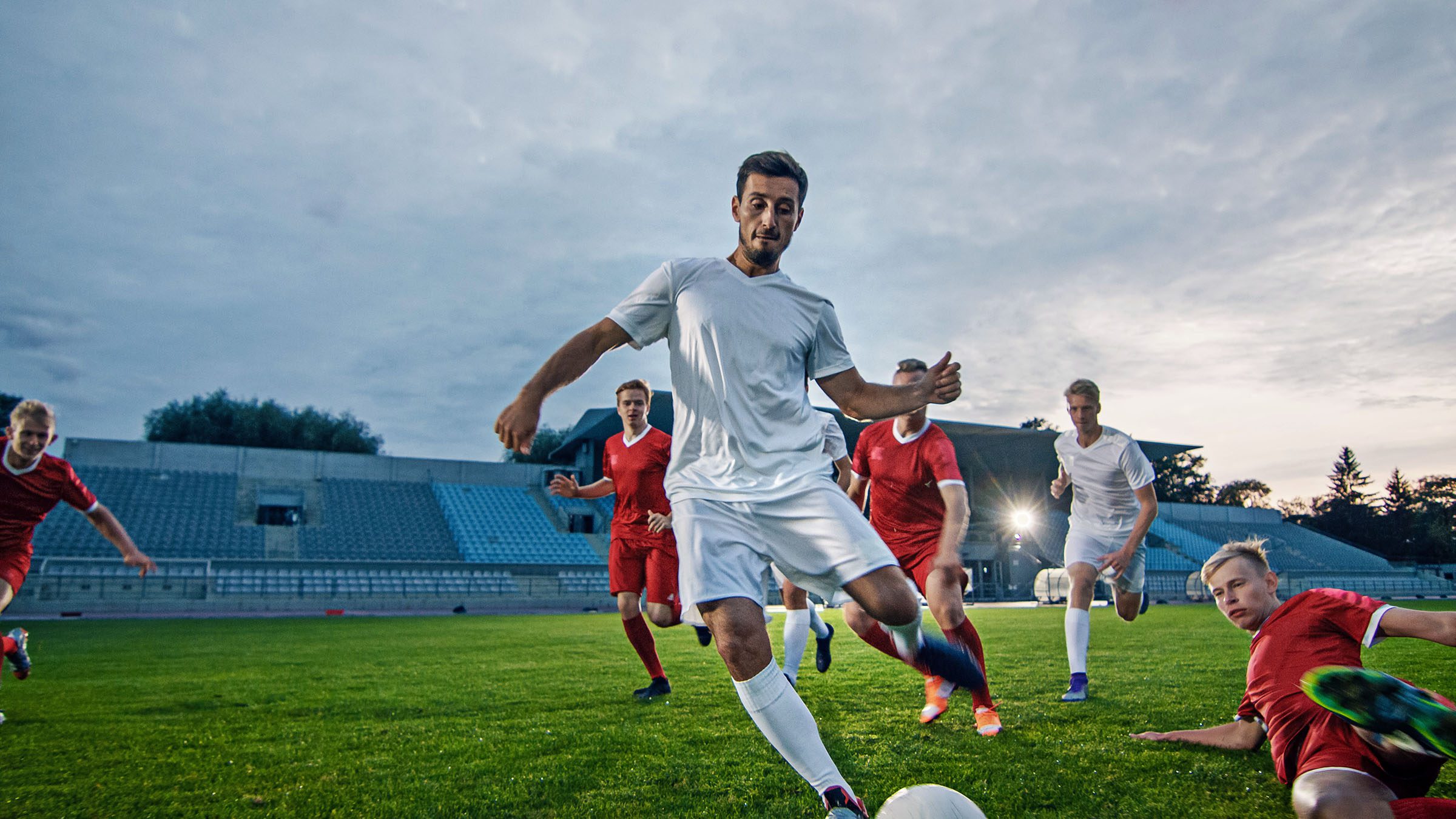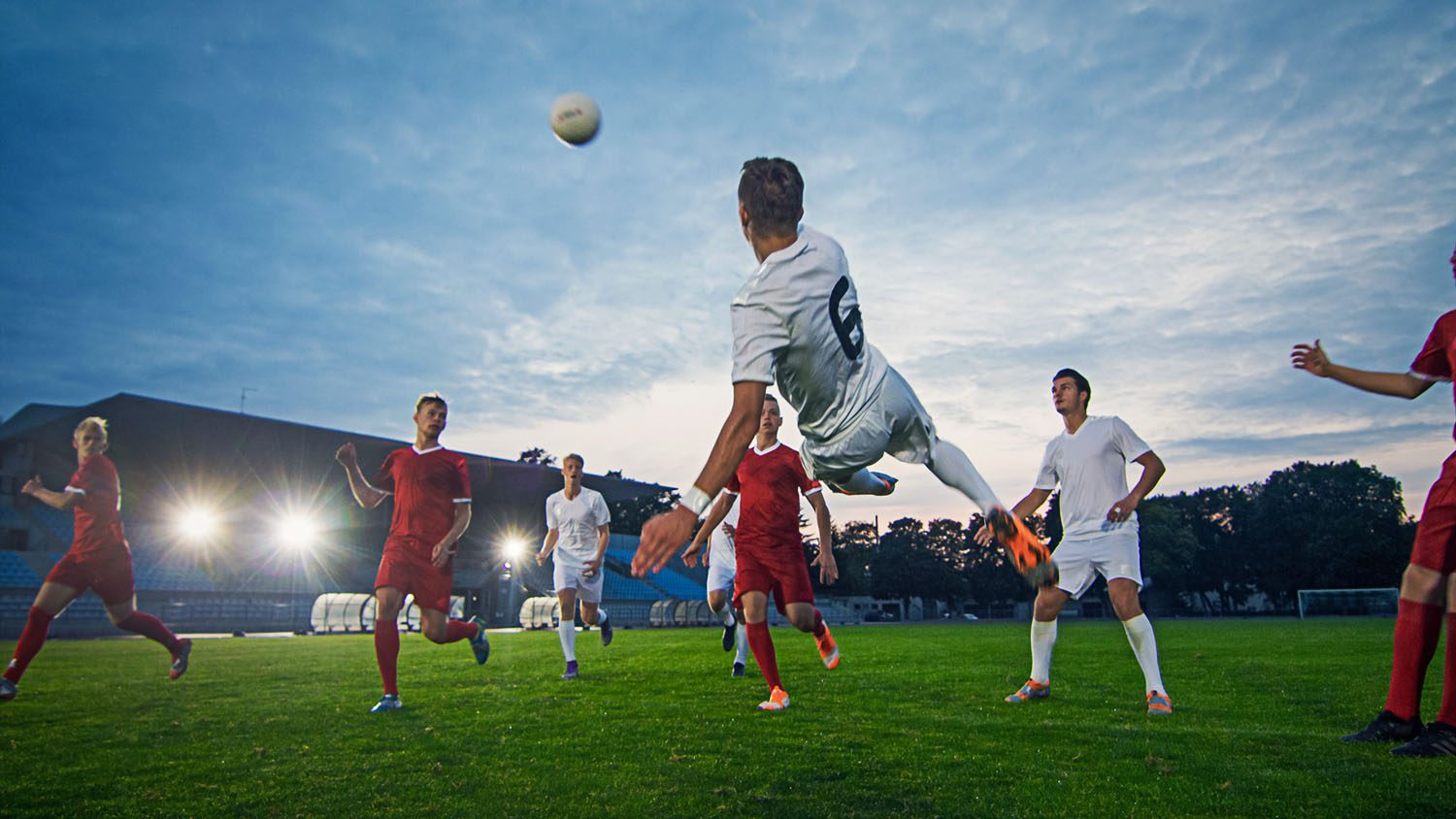Strength Training for Soccer Players: 5 Reasons to Get in the Gym

Fred Ormerod is a strength and conditioning coach, an army reserve medic, a nurse, and a master’s student working out of one of Edinburgh’s leading training facilities. He’s worked with athletes at all levels, from first-year amateurs to national champions. Here he tells you why every soccer player should include strength sessions as a regular part of their training regimen.
Fred Ormerod


Strength Training Won’t Slow You Down
Considering how low the rate of overtraining injuries are in soccer players, these views are misguided. This is partly due to a misunderstanding of what strength training actually is. Recent research shows both professional and amateur athletes who strength train make performance improvements across the board.
Whether you’re a seasoned veteran or a total newbie, here are five reasons why getting familiar with the weight room is sure to up your game.
Change the Way You Train
1. Sprint Speed
Contrary to old-school beliefs, increasing your strength actually improves your speed on the field.
Studies show that players’ speed drastically improves when their 1 rem max back squat increases to between 1.5 and 2 times their bodyweight. Five, ten, and 30-meter sprint test times improve across the board when making this change.
These results translate well into game-day situations, seeing as soccer players can sprint every 90-120 seconds during a tough match.
2. Explosive Jump Height
When testing the explosive strength of soccer players, it’s common to measure the height of a squat jump or countermovement jump (check out this video if you’re interested in seeing the difference between the two). Having legs strong enough to fight gravity is pretty obviously essential here.
Increasing overall strength leads to an improved ability to jump and re-absorb the load upon landing. This allows athletes to compete for higher aerial balls in both attacking and defensive situations.

3. Change of Direction
As mentioned before, soccer players sprint every 90-120 seconds in a game. These sprints often include a change of direction as you’re constantly sprinting to chase a ball, player, or space on the pitch.
For a change of direction over 60 degrees, massive force is applied to knees, ankles, and hips (even more so when a player is running at full tilt). Increasing the strength of your lower limbs reduces the time it takes for you to change direction and reach full speed and it helps prevent injury.
Quick changes of direction are one of the most common points of injury in soccer. But by increasing lower limb strength, your tendons, muscles, and ligaments are better able to withstand/apply load and deal with forces in play. Strength can improve your ability to maneuver your center of mass and slow down quicker by using fewer decelerating strides, which allows for faster turns and acceleration.
4. Injury Prevention & Improved Conditioning
Injuries can wreak havoc on your soccer career, no matter your level. Roughly 47% of pros cut their career short due to injury. Studies show teams who strength train improve their injury rate throughout the season. By simply increasing your 1RM squat to the golden ratio of 1.5-2x bodyweight, your odds of getting injured drop off a cliff.
In soccer, non-contact injuries (such as hamstring pulls) are more prevalent than injuries caused by contact. These non-contact injuries are usually from running, turning, shooting, and landing, all of which can be mitigated by increasing muscular and tendon strength.
Most in-game injuries occur during the last 15 minutes of a half, which implies that fatigue correlates with injury. Increasing muscle mass improves your ability to buffer lactate and store the carbohydrates needed to get through 90 minutes of playtime. Proper fueling is paramount to preventing fatigue and injury, no matter what sport you’re playing.
5. Potential Financial Gain
There is financial gain to be found in developing your physical strength attributes as a soccer player. You might think this is clutching at straws slightly, but there’s definitely a point to consider here.
In terms of player longevity, particularly in pro or semi-pro athletes, the longer you’re able to play, the greater your earning potential. Just look at players like Cristiano Ronaldo or Zlatan Ibrahimović – they’ve had much longer careers than most and raked in endorsements and trophies from all over the world.
Sponsors want more than an athlete’s ability to win — they also want your aesthetic or image. Being a player that acts and looks the part is going to sell better than one who doesn’t.
I’ve found that with my athletes their sponsors are more inclined to pay them big bucks because they’re in “conventionally marketable shape.”
Want Training Tips, Exercise Guides & Knowledge Bombs Sent to Your Inbox?
Sign up for the FitNerd newsletter from TrainHeroic
Related articles
3 Ways to Improve Mobility Without Stretching
Are you still trying the endless foam rolling and stretching exercises to get that deep squat position? We know how important mobility is for great, or even GOOD performance. All professional athletes have some comfortability in end ranges of motion. So, what else do...
The Ultimate Guide to Lunges: Queen of all Glute Exercises
Your glutes are the largest muscle group in your body. They’re responsible for almost everything your legs do—walking, running, jumping, squatting, lunging, and just standing upright. As far as moving through space goes, strong glutes are the bedrock of overall...
A Beginner’s Guide to Steel Mace Training
Author: Jesse Grund
Mace training will make you a better mover without it’s not confining you to a fixed space or predetermined range of motion. Second, it’s an offset load with 80 to 90 percent of the weight in the head. You’re also constantly having to resist rotation, which creates greater core engagement.

Join the community
Sign up for the latest training news and updates from TrainHeroic

About TrainHeroic
Support
Made with love, sweat, protein isolate and hard work in Denver, CO
© 2022 TrainHeroic, Inc. All rights reserved.





